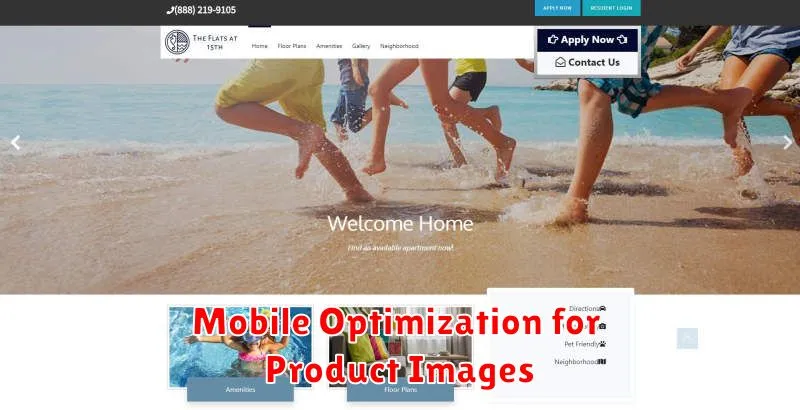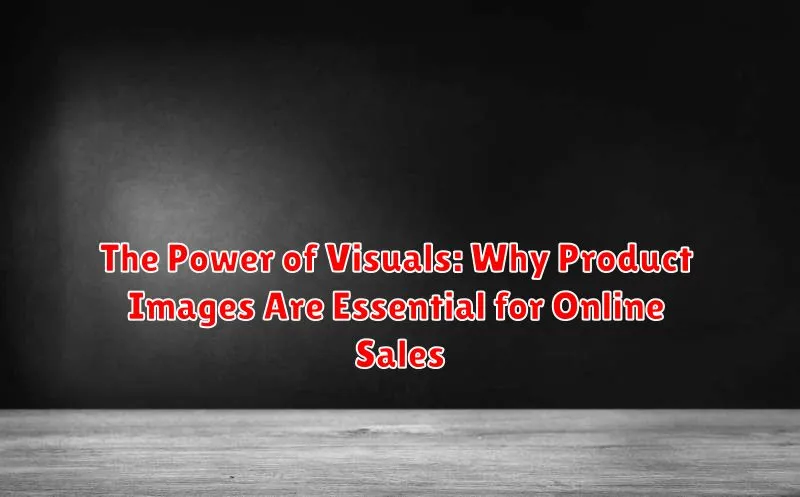In the competitive landscape of online retail, product images are no longer a supplementary feature but a critical element for success. They serve as the primary interface between your product and potential customers, influencing purchasing decisions more than any other factor. High-quality product images not only showcase the tangible aspects of your offerings, such as color, texture, and size, but also communicate intangible qualities like brand identity and value. Understanding the power of visuals is essential for optimizing your online sales strategy and achieving sustainable growth in the digital marketplace. Effective use of product photography can dramatically increase conversion rates, reduce returns, and build customer trust, ultimately driving revenue and solidifying your brand’s online presence.
This article explores the profound impact of visual content on e-commerce performance, delving into the reasons why product images are essential for online sales. We will examine the psychology behind visual appeal and how it translates into increased customer engagement. From showcasing product details and building brand credibility to minimizing purchase uncertainties and fostering positive customer experiences, we will cover the multifaceted benefits of investing in professional product photography. Learn how compelling visuals can elevate your online store, capture the attention of your target audience, and ultimately, drive online sales to new heights.
The Impact of Product Images on Purchase Decisions
In the digital marketplace, product images are the primary way customers experience a product before buying. Visuals heavily influence purchase decisions, often outweighing text descriptions. Customers rely on images to understand a product’s physical attributes, assess its quality, and ultimately, decide if it meets their needs.
High-quality images build trust and credibility. When customers can clearly see what they are buying, they are more likely to feel confident in their purchase. Conversely, blurry or unprofessional images create doubt and can lead to abandoned carts.
Product images significantly reduce purchase anxieties. By providing detailed visuals, businesses can answer unspoken customer questions, mitigating potential concerns about size, color, texture, and overall appearance. This visual reassurance is crucial for converting browsers into buyers.
Creating High-Quality Product Images

High-quality product images are crucial for showcasing your products in the best light and enticing potential customers. Professional-grade photography is a worthwhile investment. A blurry, poorly lit photo can deter a purchase, while a crisp, well-composed image builds trust and conveys professionalism.
Consider investing in a good quality camera, even if it’s just a high-resolution smartphone camera. A stable tripod is essential for sharp images, especially in low-light conditions. Ensure consistent lighting across all your product photos. A light box can be invaluable for controlling reflections and shadows, particularly for smaller items.
Backgrounds should be simple and uncluttered, allowing the product to be the focal point. White or neutral gray backgrounds are often preferred. Pay attention to image resolution. Images should be large enough to allow for zooming but optimized for web loading speeds. Aim for high resolution without excessive file size.
Optimizing Product Images for Search Engines
Optimizing your product images for search engines is crucial for improving your online visibility and driving organic traffic to your product pages. Search engines rely on various factors to understand and rank images, and by optimizing these elements, you can significantly enhance your search performance.
File names play a vital role. Use descriptive, keyword-rich file names that accurately reflect the product depicted. Instead of using generic names like “IMG_1234.jpg,” opt for specific names like “red-leather-handbag.jpg.” This helps search engines understand the image content.
Alt text, or alternative text, is another important element. Provide concise and descriptive alt text for each image, incorporating relevant keywords. This text is used by screen readers and also helps search engines understand the context of the image. Ensure the alt text accurately describes the product while avoiding keyword stuffing.
Image size and format also contribute to search engine optimization. Compressing images reduces file size, leading to faster page load times, which is a positive ranking factor. Choose appropriate image formats like JPEG or PNG, balancing quality and file size.
Utilizing structured data provides search engines with additional information about your products. Schema markup for product images can include details like the product name, brand, and price, enhancing the richness of your search results and potentially increasing click-through rates.
Using Product Images to Tell a Story
Product images can be more than just simple depictions of an item; they can be powerful storytelling tools. By carefully crafting the scene around your product, you can evoke emotions, create a sense of lifestyle, and connect with your target audience on a deeper level.
Consider the narrative you want to convey. Are you selling a rugged backpack? Show it nestled amongst camping gear, suggesting adventures in the wilderness. Is it a luxurious piece of jewelry? Present it in a sophisticated setting, highlighting its elegance and exclusivity.
Context is key. The environment, props, and even the lighting can all contribute to the story you’re telling. Think about the message you want to send and how your product fits into a larger narrative. This approach transforms a simple product image into a compelling visual story that resonates with potential buyers.
Showcasing Different Angles and Perspectives
Presenting your product from multiple angles provides a comprehensive view that helps customers visualize it in real-world scenarios. This is especially important for items with intricate details, unique textures, or three-dimensional aspects.
Multiple images allow customers to examine the product’s overall shape and size, as well as specific features. Think about showcasing the top, bottom, sides, and any important details up close. For clothing, showing various angles helps customers understand the fit and drape of the garment.
Offering 360-degree views or interactive spins enhances the online shopping experience even further, giving customers a sense of control as they virtually examine the product from all directions. This immersive approach can significantly boost customer confidence and reduce purchase hesitation.
Highlighting Key Features and Benefits
High-quality product images offer a powerful way to showcase key features and benefits, effectively communicating value to potential customers. Instead of relying solely on text descriptions, visuals allow shoppers to instantly grasp the unique selling propositions of your products.
Close-up shots highlighting specific details, such as texture, material, or intricate design elements, can significantly enhance a customer’s understanding. For example, showcasing the stitching on a leather bag or the water-resistant properties of a jacket through detailed imagery helps customers visualize the quality and practicality of the product.
By visually demonstrating the benefits, you address customer needs directly. Showing how a product simplifies a task, improves comfort, or enhances style enables them to see its value and makes a stronger case for purchase.
The Importance of Image Consistency
Maintaining consistent visuals across your product imagery builds a strong brand identity and fosters customer trust. Inconsistency can create confusion and erode a professional image. When customers see varying image styles, qualities, or backgrounds across your product listings, they may perceive your brand as less credible or organized.
Consistent photography style, including lighting, angles, and background, ensures products are presented uniformly. This allows the focus to remain on the product itself and minimizes distractions caused by varying visual elements. A consistent style guide for product photography can greatly assist in achieving this goal.
Furthermore, consistency aids in creating a cohesive brand experience across different platforms and marketplaces. Whether a customer views your products on your website, social media, or through a third-party retailer, a consistent visual presentation reinforces brand recognition and memorability.
Mobile Optimization for Product Images

In today’s mobile-first world, optimizing product images for mobile devices is no longer optional, it’s essential. A significant portion of online shopping occurs on smartphones and tablets, and if your images aren’t optimized, you risk losing potential customers.
File size plays a critical role in mobile optimization. Large image files lead to slow loading times, which can frustrate users and increase bounce rates. Compressing images without sacrificing quality is key. Utilize file formats like WebP, which offer superior compression and quality compared to JPEG and PNG.
Responsive design ensures your images adapt seamlessly to various screen sizes. Images should scale proportionally and maintain their clarity on different devices. Avoid fixed dimensions and embrace flexible image containers.

